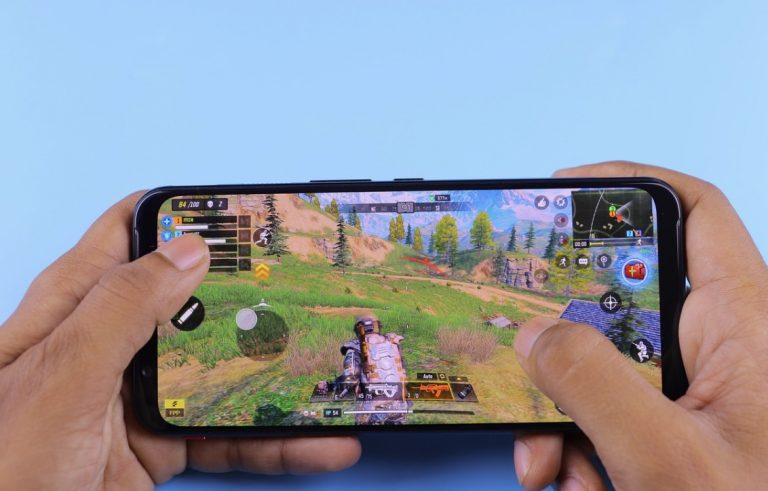Mobile gaming has evolved from a casual pastime into a booming global industry worth billions. With more players joining the scene every day, developers are constantly innovating ways to enhance user engagement, offer rewarding experiences, and keep players coming back. One of the most prominent strategies used to achieve this is the in-game top-up system, where players spend real money to purchase in-game currency or resources.
Top-ups are not just about spending money for convenience. They’ve become an important part of the mobile gaming economy and a key driver in how games are designed, monetized, and experienced. For many players, top-ups offer a way to fast-track progress, unlock premium features, and compete at higher levels without grinding for hours. But like any tool, their impact depends on how they’re used.
Let’s dive into how top-ups are changing the mobile gaming landscape—and what players should consider before tapping “buy now.”
What Are Top-Ups and Why Do Players Use Them?
In mobile games, a “top-up” refers to the purchase of in-game currency using real-world money. This currency is then used to buy items such as character upgrades, skins, power-ups, energy refills, and more. Top-ups are available in a wide variety of game genres—from RPGs and strategy games to puzzle apps and battle royales. You can get more information here or by navigating to the in-game store, which typically provides a breakdown of currency packages and the benefits of each purchase. These top-ups allow players to bypass time gates, acquire rare gear, or speed up building and leveling processes.
For players who have limited time but still want to compete or explore high-level content, top-ups offer a practical shortcut. They eliminate the need for repetitive tasks and give instant gratification—a tempting option in games with complex progression systems.
Accelerating Progress and Unlocking Premium Content
One of the biggest appeals of top-ups is their ability to accelerate progress. In games where building, training, or resource-gathering can take hours or even days, paying a small fee can move things along at lightning speed. This is especially popular in competitive games, where being even slightly ahead of other players can make a major difference.
Top-ups unlock exclusive or premium content that free-to-play users might not be able to access. Whether it’s a limited-time hero, a powerful weapon, or a visually stunning skin, these items often give top-up users a significant edge or simply offer more variety and customization.
Many games have tiered systems, where spending more unlocks VIP levels or bonuses that stack over time—encouraging continued investment and engagement. For players committed to a game long-term, this can feel like a worthwhile enhancement of their experience.
Supporting Game Developers and Sustaining Game Quality
Top-ups don’t just benefit players—they play a crucial role in supporting developers. Most mobile games are offered as free-to-play (F2P), meaning players can download and enjoy the game without paying anything upfront. Creating and maintaining a game takes resources, and top-ups help fund server costs, new content development, customer support, and regular updates.
Without the revenue from top-ups, many F2P games would struggle to survive, let alone offer the frequent improvements and rich content players have come to expect. In this sense, top-up users contribute to the game’s ecosystem and help ensure its longevity.
The Pay-to-Win Debate
Of course, the top-up system isn’t without controversy. The term “pay-to-win” (P2W) is often used to describe games where players can purchase powerful advantages that make it difficult for free players to compete. When top-ups provide direct competitive benefits—like stronger characters or exclusive abilities—it can create imbalance and alienate portions of the player base.
Perception plays a major role here. If players feel that skill and strategy are overshadowed by spending power, frustration builds quickly. This can result in declining player engagement and community backlash. To counteract this, many developers implement systems that match players by level, power rating, or purchase history, helping to level the playing field.
Making Smarter Top-Up Decisions
If you enjoy a game and want to enhance your experience through top-ups, the key is to spend wisely. Set a budget for how much you’re willing to invest in your entertainment, just as you would with movies, subscriptions, or dining out. Many games offer regular deals, events, or first-time purchase bonuses—take advantage of these for better value.
Understand what you’re getting before you spend. Read user reviews, watch gameplay videos, or join online communities to see what others are saying about the game’s economy. Be wary of games that push constant microtransactions or make it nearly impossible to progress without paying.

Top-ups have become a defining feature of modern mobile gaming, offering players faster access to content, the ability to compete at higher levels, and opportunities to customize their experience. When used mindfully, they can enhance enjoyment, reward dedication, and support the developers behind the games we love.
As the gaming industry continues to evolve, top-ups are likely to remain a core part of how games are monetized and experienced. For players, the challenge is to strike the right balance—leveraging the benefits of top-ups while keeping the fun, challenge, and fairness that make gaming truly rewarding.


0 Comments